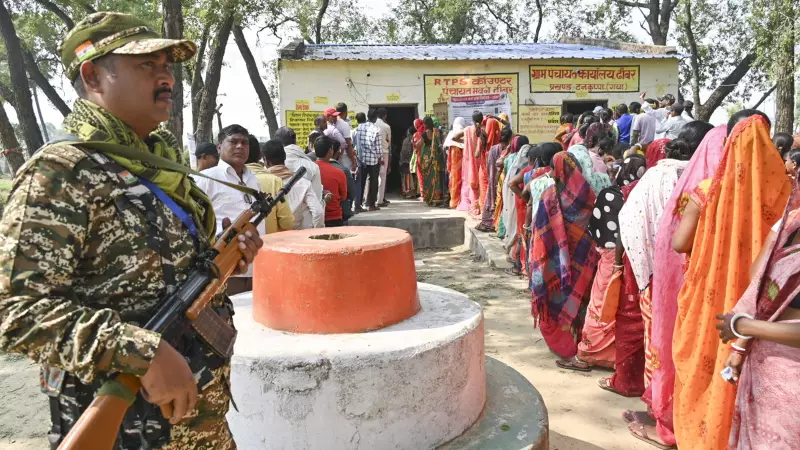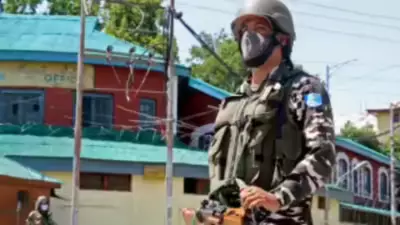
In the politically charged landscape of Bihar, a curious phenomenon unfolds as the Bharatiya Janata Party adopts a markedly different approach compared to its strategy in other Indian states. While the party typically blends cultural nationalism with development rhetoric elsewhere, in Bihar the focus remains steadfastly on basic infrastructure and welfare schemes.
The Development-First Narrative
During the recent assembly elections in Bihar, villagers in Barbigha constituency of Sheikhpura district expressed their voting priorities with remarkable clarity. When The Indian Express interviewed residents on November 6, 2025, groups comprising Extremely Backward Classes, Paswans, and Manjhi communities discussed improved roads, employment needs, and law enforcement rather than religious divisions.
Ramesh Paswan, a local resident, explicitly stated that Hindu-Muslim tensions were absent in their area, encapsulating the unique political atmosphere that has developed under Chief Minister Nitish Kumar's two-decade leadership. Despite the BJP's significant presence in the state, the ruling NDA alliance has maintained a "bijli, sadak, paani" (electricity, roads, water) focus with minimal space for Hindutva politics.
Contrast with Neighboring States
The Bihar model presents a striking contrast to the party's approach in adjacent states. To the west, Uttar Pradesh has witnessed the simultaneous rise of BJP political dominance and Hindutva cultural politics. Similarly, in eastern West Bengal, the BJP's growing influence has been accompanied by heightened religious polarization, with annual Ram Navami celebrations frequently sparking political controversies.
Further east in Assam, the BJP government has introduced measures with distinct Hindu nationalist undertones, including recent attempts to ban polygamy across communities while making exceptions primarily for tribal populations. The situation differs in southern states where the BJP remains organizationally weak, but Bihar stands out as an exception where a politically strong BJP consciously moderates its cultural agenda.
Caste and Welfare: The Nitish Kumar Formula
The distinctive political landscape of Bihar bears the clear imprint of Chief Minister Nitish Kumar's governance approach. Caste mobilization in the state has evolved differently from the Sangh Parivar's method of integrating deprived communities into a broader Hindu identity framework.
Across multiple constituencies, voters from Dalit, EBC, OBC, and upper caste communities supporting the NDA consistently cited tangible improvements in infrastructure and governance as their primary reasons for backing the ruling alliance. Road development, reliable electricity supply, flyover construction, and improved law and order emerged as recurring themes in voter conversations.
Among the most marginalized communities like Musahars, government welfare initiatives including free grain distribution and the recent transfer of Rs 10,000 to women's accounts under the Mukhyamantri Mahila Rojgar Yojana received particular mention. The political categories of Extremely Backward Classes and Mahadalits have been mobilized primarily around material upliftment rather than cultural pride under Kumar's leadership.
This approach differs significantly from Dalit assertion movements seen in states like Punjab, where cultural celebration of community identity through music and iconography plays a central role. In Bihar, caste categories function primarily as channels for targeted welfare delivery rather than platforms for cultural expression.
The Seemanchal Exception
Only in Bihar's Seemanchal region, characterized by substantial Muslim populations living alongside Hindu communities, does a subtle Hindutva undercurrent occasionally surface in political discourse. In Kusaila village of Katihar district, conversations with Mandal community members revealed occasional references to religious differences.
While these NDA supporters praised Nitish Kumar's leadership and predicted his return to power, local resident Dineshwar Mandal notably diverged from the development-focused conversation to mention nearby Muslim settlements and speculate about beef consumption patterns. Such comments, while isolated, indicate that religious identity politics hasn't completely disappeared from Bihar's political landscape.
The opposition's critique of the NDA government similarly revolves around development and welfare delivery rather than cultural issues. Given Bihar's historical underdevelopment and predominantly rural character—the state was 89% rural according to the 2011 Census—basic infrastructure concerns transcend caste and religious boundaries across party lines.
This development-centric political consensus, shaped by two decades of Nitish Kumar's leadership and the BJP's strategic accommodation, continues to define Bihar's unique position in India's political landscape, where material concerns consistently override cultural polarization.





